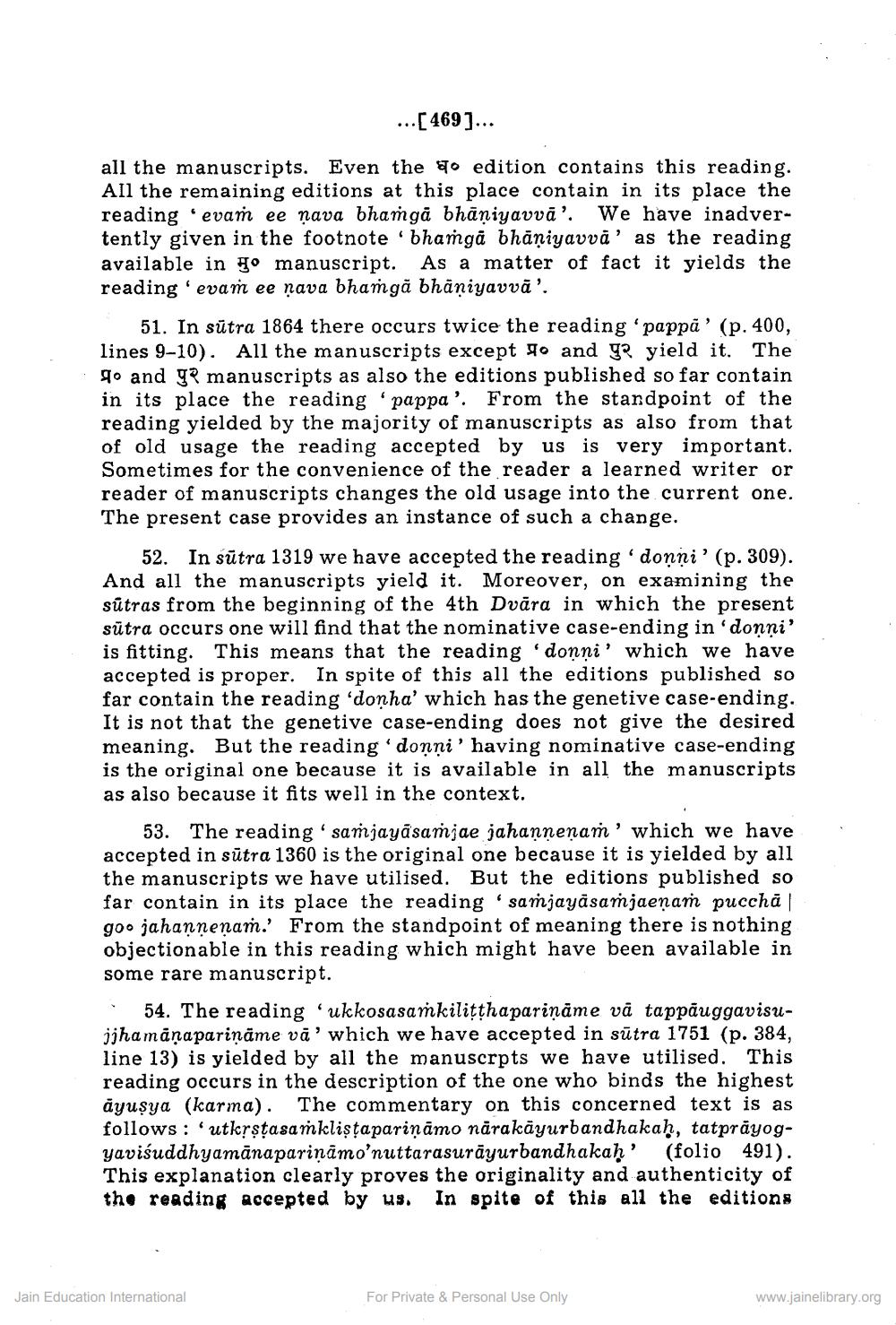________________
... [469]...
all the manuscripts. Even the edition contains this reading. All the remaining editions at this place contain in its place the reading 'evam ee nava bhamga bhāniyavvā'. We have inadvertently given in the footnote bhamga bhāņiyavva' as the reading available in 4 manuscript. As a matter of fact it yields the reading evam ee nava bhamgă bhāniyavvā'.
51. In sūtra 1864 there occurs twice the reading 'pappă' (p. 400, lines 9-10). All the manuscripts except fo and y? yield it. The go and ge manuscripts as also the editions published so far contain in its place the reading pappa'. From the standpoint of the reading yielded by the majority of manuscripts as also from that of old usage the reading accepted by us is very important. Sometimes for the convenience of the reader a learned writer or reader of manuscripts changes the old usage into the current one. The present case provides an instance of such a change.
52. In sūtra 1319 we have accepted the reading donni' (p. 309). And all the manuscripts yield it. Moreover, on examining the sutras from the beginning of the 4th Dvāra in which the present sutra occurs one will find that the nominative case-ending in 'donni' is fitting. This means that the reading 'donni' which we have accepted is proper. In spite of this all the editions published so far contain the reading 'donha' which has the genetive case-ending. It is not that the genetive case-ending does not give the desired meaning. But the reading'donni' having nominative case-ending is the original one because it is available in all the manuscripts as also because it fits well in the context.
53. The reading samjayasamjae jahannenam' which we have accepted in sūtra 1360 is the original one because it is yielded by all the manuscripts we have utilised. But the editions published so far contain in its place the reading samjayāsamjaenam pucchã | goo jahannenam.' From the standpoint of meaning there is nothing objectionable in this reading which might have been available in some rare manuscript.
54. The reading ukkosasaṁkiliţthapariņāme vä tappāuggavisujjhamanaparināme vā' which we have accepted in sūtra 1751 (p. 384, line 13) is yielded by all the manuscrpts we have utilised. This reading occurs in the description of the one who binds the highest ayusya (karma). The commentary on this concerned text is as follows: 'utkrstasaṁklistapariņāmo nārakāyurbandhakah, tatprāyogyaviśuddhyamānaparināmo'nuttarasurāyurbandhakah' (folio 491). This explanation clearly proves the originality and authenticity of the reading accepted by us. In spite of this all the editions
Jain Education International
For Private & Personal Use Only
www.jainelibrary.org




